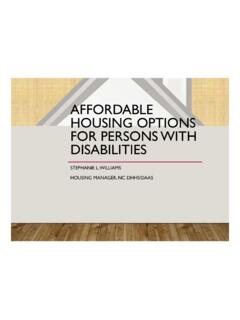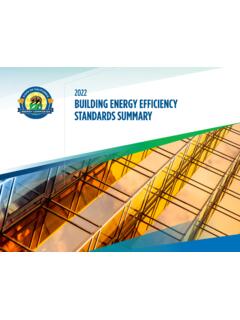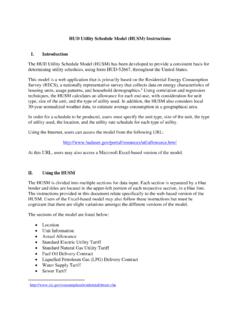Transcription of Traditional Color Coding for Land Uses by Sanjay Jeer ...
1 1 Traditional Color Coding for land UsesbySanjay Jeer, AICP with Barry Bain, AICPA merican Planning AssociationDecember 13, 1997 DRAFTLand-use maps are the most common way of presenting land -based data. They show land -uses by rendering them in different colors. They effectively illustrate land -use concepts bygraphically displaying land -uses, roads, public infrastructure, and community agencies have been using one Color scheme since the 1950 s that has become adefacto standard. This standard is also being frequently recommended to planners acrossthe country.
2 The following is a survey of this and other Traditional coloring generally use a different Color for each of the major land -use categories. For example,it is common to render: Yellows for residential uses such as single - family and town houses. Browns for multi- family and high-rise residential Reds for retail and commercial uses Purples for industrial uses Blues for institutional and public facilities Greens for recreational uses Grays for industrial utilitiesThe above primary and secondary colors generally serve basic land -use maps that do nothave complex land -use categories.
3 When they do, it is common to find additional colors inshades closer to secondary and tertiary colors. Beyond this Traditional Color scheme, systemsvary widely on how many colors to show on a map and which colors denote what land some colors are close to others and easily discernible, elaborate Coding schemes alsospecify the appropriate Prisma Color number (Prisma Color is the trade name andmanufacturer of popular Color pencils). On black and white maps, colors replacemonochrome patterns of varying crosshatched lines. We have located several such coloringand hatching schemes in standard planning textbooks, plans, guides, etc.
4 , in the APA sresearch library. The following is a summary of these Coding SchemesThe Color Coding schemes from the following sources were surveyed. Planning Design Criteria. 1969. De Chiara. This book has a coloring scheme forland-use categories, which is listed in 2 A Proposal for a Standardized land Use Classification Project. 1958. American Instituteof Planners, North Carolina Section of the Southeast Chapter land UseClassification Committee. This is of the earliest examples of a complete colorcoding scheme that many other schemes copied later.
5 This is also the standardtaught in planning schools. land -use Classification Manual. 1965. Inter-county Regional Planning , Colo. This is an additional example of a Color Coding scheme from theDenver, Colorado metropolitan area which is similar to the North Carolinaexample, but with some important variations. Guidelines for Preparing Urban Plans. 1995. Anderson, Larz T. Planners Press:Chicago, Ill. Contains concise guidelines for coloring and presenting data onmaps. It also has standard do s and don ts for graphical addition to the above sources, we also examined land -use maps of the followingjurisdictions (randomly chosen from the APA Research Library) for examples of commonand uncommon colors.
6 Aurora, Colorado Sioux City, Iowa Barnstable County, Massachusetts City of Winter Park, FloridaThe survey generally shows the Traditional Color Coding conventions for each standard land -use category. However, there are some differences when maps utilize categories that do notfit the six commonly used land use land uses are fairly consistent in using shades of yellows and browns for higherdensities, multi- family developments, and high rise residential areas. Mobile homes tend tobe in colors different from yellows or browns. For example, purple is the recommendedcolor in the De Chiara scheme, lavender in Denver s land -Use Classification Manual ColorScheme), and other colors as uses are generally colored in shades of orange to red.
7 The denser thecommercial, the redder the Color . Some maps use pink for tourist commercial areas as uses are designated a range of colors in the purple or gray shades. For example: Purple Shades: Commercial and residential mixed use areas ( , Aurora and Denver) Residential with limited office and neighborhood commercial ( , Sioux City) Industrial with limited office and retail ( , Sioux City) Gray Shades: Office and light industry mixed used areas ( , Aurora) Orange & Red Shades: 3 Central Business Districts ( , Winter Park, Sioux City)Industrial uses in most cases are rendered in grays or shades of purple.
8 The heavier theindustry, the darker the gray. Sometimes blues may also be used (Denver and NorthCarolina).Institutional uses are mostly blue, but for some types of institutional uses, such as schoolsand health care facilities, we found greens and grays as space areas are typically green or left uncolored. Greens may also represent forestedareas and Indian reservations; when more than one open space category is used, we alsofound dark greens for agricultural uses, and light greens for recreational and governmental lands, such as military installations, are commonly colored in lightshades like pink, or left transportation facilities and public utilities, black is the preferred Color .
9 Different typesof facilities may be colored with different shades of gray when grays are not used for otherdesignations. For environmental categories such as wetlands, resource protection areas, andsteep slopes, deeper shades of greens and blues are frequently and White Coding SchemesIn addition to coloring land -uses, maps also use monochrome colors or black and whitepatterns to differentiate land -use categories. The hatched patterns traditionally indicatedenser land uses with heavier patterns while open space or recreational areas are left blank orlightly patterned.
10 Below is a description of some land -uses and the black and white patternsassociated with Hatching PatternsResidentialCross hatches with darker patterns forhigher densitiesCommercialSlanted lines, darker patterns for higherintensitiesIndustrial, Transportation, and UtilitiesPoints, diamonds, stars, usesVertical linesParks and RecreationStipple patternsAgriculturalCurved linesSome standards also specify the hatched pattern by giving Zip-a-Tone or Blu-zip numbers,which refer to the sheets of sticky-back papers with transparent hatching on them.








